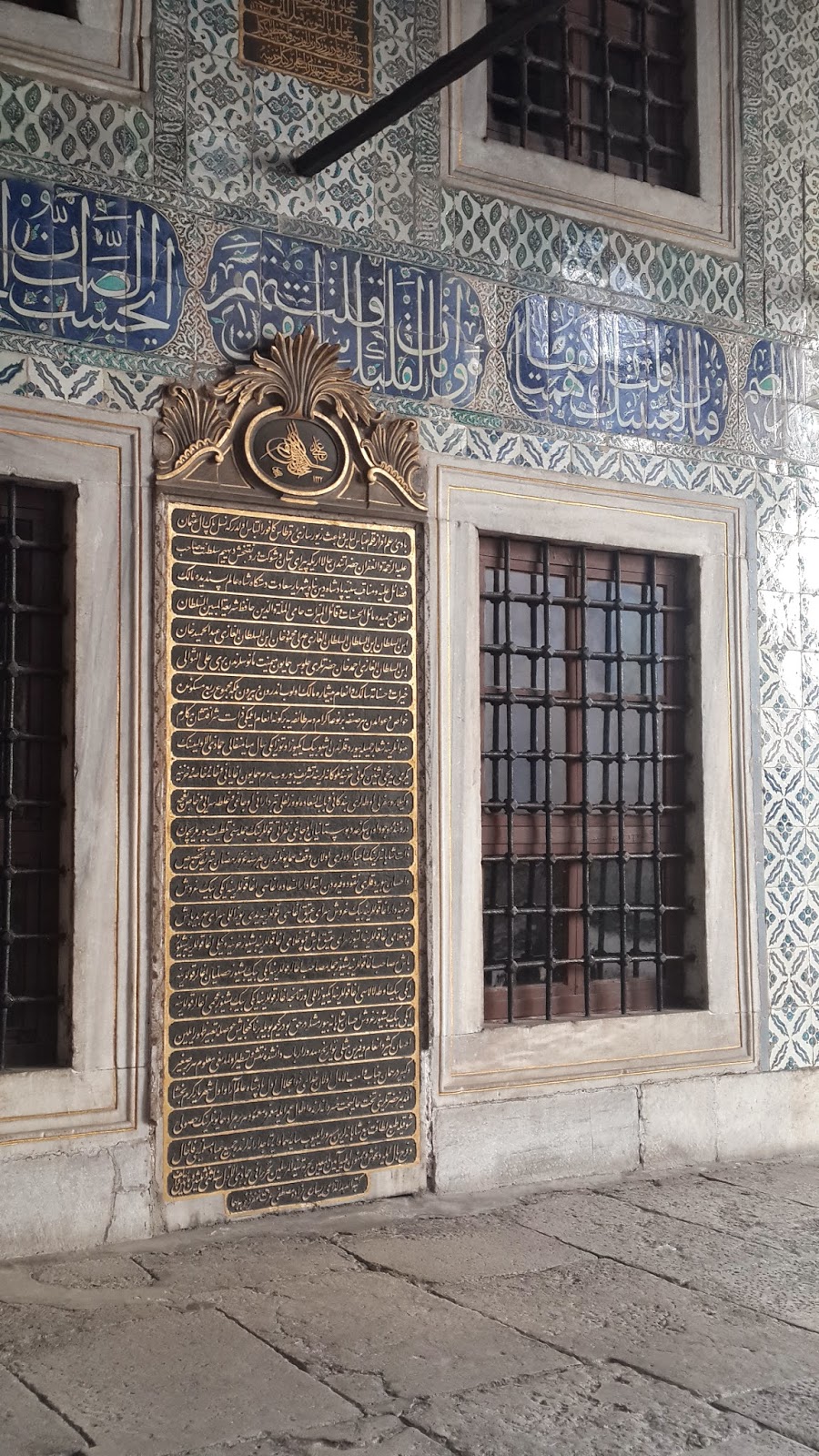 |
| Located in the northwest corner of the cistern, the bases of two columns reuse blocks carved with the visage of Medusa. The origin of the two heads is unknown, though it is thought that the heads were brought to the cistern after being removed from a building of the late Roman period. There is no written evidence that suggests they were used as column pedestals previously. Tradition has it that the blocks are oriented sideways and inverted in order to negate the power of the Gorgons' gaze, however it is widely thought that one was placed sideways only to be the proper size to support the column. The upside down Medusa was placed that way specifically because she would be the same height right side up |
 |
 |
| The name of this subterranean structure derives from a large public square on the First Hill of Constantinople, the Stoa Basilica, beneath which it was originally constructed. Before being converted to a cistern, a great Basilica stood in its place, built between the 3rd and 4th centuries during the Early Roman Age as a commercial, legal and artistic centre. The basilica was reconstructed by Illus after a fire in 476. A |
 |
| HERE WE GO..... The Grand Bazaar in Istanbul is one of the largest and oldest covered markets in the world, with 61 covered streets and over 3,000 shops which attract between 250,000 and 400,000 visitors daily. |
 |
| The Topkapı Palace is a large palace in Istanbul, Turkey, that was the primary residence of the Ottoman sultans for approximately 400 years (1465–1856) of their 624-year reign. As well as a royal residence, the palace was a setting for state occasions and royal entertainments. It is now a museum and as such a major tourist attraction. It also contains important holy relics of the Muslim world, including Muhammed's cloak and sword. The Topkapı Palace is among the monuments contained within the "Historic Areas of Istanbul", which became a UNESCO World Heritage Site in 1985, and is described under UNESCO's criterion iv as "the best example[s] of ensembles of palaces [...] of the Ottoman period." The palace complex consists of four main courtyards and many smaller buildings. At its peak, the palace was home to as many as 4,000 people, and covered a large area with a long shoreline. It contained mosques, a hospital, bakeries, and a mint.Construction began in 1459, ordered by Sultan Mehmed II, the conqueror of Byzantine Constantinople. |
 |
| The Imperial Harem occupied one of the sections of the private apartments of the sultan; it contained more than 400 rooms.The harem was home to the sultan's mother, the Valide Sultan; the concubines and wives of the sultan; and the rest of his family, including children; and their servants.The harem consists of a series of buildings and structures, connected through hallways and courtyards. Every service team and hierarchical group residing in the harem had its own living space clustered around a courtyard. The number of rooms is not determined, with probably over 100, of which only a few are open to the public. These apartments (Daires) were occupied respectively by the harem eunuchs, the Chief Harem Eunuch (Darüssaade Ağası), the concubines, the queen mother, the sultan's consorts, the princes and the favourites. There was no trespassing beyond the gates of the harem, except for the sultan, the queen mother, the sultan's consorts and favourites, the princes and the concubines as well as the eunuchs guarding the harem. |
 |
| The Bosphorus is a strait that forms part of the boundary between Europe and Asia. The Bosporus, the Sea of Marmara, and the Dardanelles strait to the southwest together form the Turkish Straits. The world's narrowest strait used for international navigation, the Bosporus connects the Black Sea with the Sea of Marmara (which is connected by the Dardanelles to the Aegean Sea, and thereby to the Mediterranean Sea). |
 |
| Kebab time with Noah ( the best ). |
 |
| A glass of juice is 3 Turkish liras (about 1,5 euros or 2$). A guy with the surgical gloves squeezes it out on a special press and even strains it. Very nice, and keeps you going and going. |
 |
| The Galata Bridge is a bridge that spans the Golden Horn in Istanbul, Turkey. From the end of the 19th century in particular, the bridge has featured in Turkish literature, theater, poetry and novels. |
 |
| ISTANBUL |
 |
| The Galata Tower — called Christea Turris (the Tower of Christ in Latin) by the Genoese — is a medieval stone tower in the Galata/Karaköy quarter of Istanbul, Turkey, just to the north of the Golden Horn's junction with the Bosphorus.
One of the city's most striking landmarks, it is a high, cone-capped
cylinder that dominates the skyline and offers a panoramic vista of
Istanbul's historic peninsula and its environs. |












































Então sixpackteam, pelos vistos tudo a correr da melhor maneira ! Tenho acompanhado a vossa tournée Mundial e ao mesmo tempo a roer-me todo hehehehe. Pode ser que para o ano ainda vos apanhe nalgum ponto do Globo, por acaso estäo a pensar na Amazónia ? Fotos muito muito nices. Continuação de uma óptima digressão, se precisarem de alguma coisa que vos possa ajudar estejam à vontade, fim de ano vou para Sta, arranjei uma casa no lodge do Bernie :-), abraços e beijinhos. Tózé Ferreira
ReplyDeleteAlo To Ze,
ReplyDeleteAmazonia ainda nao sabemos , isto eh um pacote de surpersas kekekek, seria bom encontrarmo-nos algures por este mundo diverso.
Boa essa escolha de Santa Maria para fim do ano.
obg pelo comentario aqui no blog ....ja te mando um email em breve.
grande abc dos sixpack